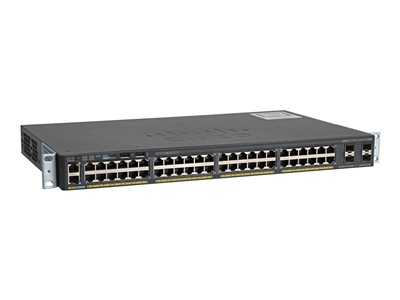
Introduction
In the ever-evolving landscape of networking technology, the demand for robust, high-performance, and scalable solutions has never been greater. Cisco, a pioneering force in the field of networking, offers an innovative approach to address these demands: Cisco switch stacking. This transformative concept allows organizations to seamlessly expand their network capabilities by interconnecting multiple Cisco switches into a unified, cohesive system.
Imagine the power of having your switches work in harmony, combining their strengths to deliver enhanced performance, simplified management, and unmatched scalability. Cisco switch stacking enables you to achieve precisely that, ushering in a new era of network architecture that promises to revolutionize the way you build and manage your networks.
In this exploration of Cisco switch stacking, we will delve into the fundamental principles that underpin this technology. We’ll unravel the intricacies of physical connectivity and logical cohesion, and we’ll guide you through the array of benefits this approach brings to the table. From increased bandwidth and streamlined administration to heightened redundancy and cost efficiency, the advantages of Cisco switch stacking are diverse and impactful.
Cisco Switch Stacking: Scaling Up Your Network with Ease
Cisco switch stacking is a network architecture feature that allows multiple Cisco switches to be interconnected and managed as a single logical unit. This technology is primarily used to enhance network performance, scalability, and manageability. Stacking involves physically connecting the switches using specialized stacking cables and configuring them to operate as a single entity.
1. Stack Formation:
Cisco switch stacking involves physically connecting multiple switches using specialized stacking cables. These cables provide both data connectivity and power to the connected switches. The switches are typically stacked in a daisy-chain fashion, with each switch connecting to the one above and below it in the stack. The top and bottom switches in the stack are usually connected to the network infrastructure.
2. Logical Stack:
Once the physical connections are established, the switches operate as a single logical unit. They share a common management IP address, and administrators can interact with the stack as if it were a single switch. This simplifies network management tasks by reducing the number of individual devices to configure, monitor, and troubleshoot.
3. Stacking Architecture:
Cisco offers different stacking architectures, including:
Ring Topology: In a ring topology, each switch is connected to the two adjacent switches in the stack. This topology provides redundancy and multiple paths for data traffic.
Full-Mesh Topology: In a full-mesh topology, each switch is connected to every other switch in the stack. This topology maximizes redundancy and provides more direct paths for data.
Partial-Mesh Topology: This topology is a compromise between ring and full-mesh. Some switches connect to all others, while others only connect to a subset.
4. Control Plane and Data Plane:
In a stacked configuration, switches operate with a shared control plane and separate data planes. The control plane manages configuration, routing, and protocol-related tasks for the entire stack. The data plane handles forwarding of network traffic.
5. Virtual Switching System (VSS):
Cisco Catalyst switches also offer a feature called Virtual Switching System (VSS), which is similar to stacking but is designed for modular switches. VSS allows two physical switches to operate as a single logical switch, providing high availability, increased bandwidth, and simplified management.
6. Configuration and Management:
Managing a stack involves configuring it as a single unit. Configuration changes made on one switch are automatically propagated to the other switches in the stack. Cisco provides a variety of management interfaces, including the command-line interface (CLI), web-based interface, and network management tools like Cisco Prime Infrastructure.
7. Scaling and Expansion:
Stacking provides a scalable solution for growing networks. As your network needs increase, you can add new switches to the stack to expand capacity. Cisco typically provides guidelines for the maximum number of switches that can be stacked together based on the switch models and software versions.
8. Backup and Restore:
Regularly backing up the stack’s configuration is crucial. In the event of a failure or replacement, having a recent backup ensures a swift recovery process. Configuration synchronization among the stack members helps maintain consistency and avoid configuration discrepancies.
9. Troubleshooting:
While stacking simplifies management, troubleshooting can become more complex due to the interdependencies between switches. Cisco’s documentation and support resources provide guidance on diagnosing and resolving stack-related issues.
Remember, Cisco’s implementation of switch stacking may evolve over time, so it’s important to refer to the latest documentation and guidelines provided by Cisco for accurate and up-to-date information.
Also read:- The Blade Server Revolution: Trends Shaping the Future of IT Infrastructure
Conclusion:
In the realm of network architecture, the pursuit of performance, scalability, and manageability remains an unceasing journey. Cisco Switch Stacking has emerged as a beacon of innovation, offering a transformative solution to these challenges. As we conclude our exploration of this technology, we find ourselves at the threshold of a new era in networking, one defined by seamless expansion and uncompromising efficiency.
The journey through Cisco switch stacking has illuminated the power of collaboration. By uniting individual switches into a cohesive stack, organizations can achieve not only elevated network performance but also a harmonious synergy that simplifies management and amplifies redundancy. The promise of increased bandwidth, streamlined configuration, and cost savings is not just a possibility but a reality that empowers businesses to reach new heights.
As you navigate the intricacies of switch stacking, it becomes evident that this technology is a fusion of both art and science. The physical connectivity, logical abstraction, and shared intelligence are the brushstrokes that create a masterpiece of network architecture. Yet, like any intricate work of art, the devil lies in the details. Considerations of compatibility, bandwidth distribution, and the prudent deployment of redundancy mechanisms are the palette from which your network’s success is painted.